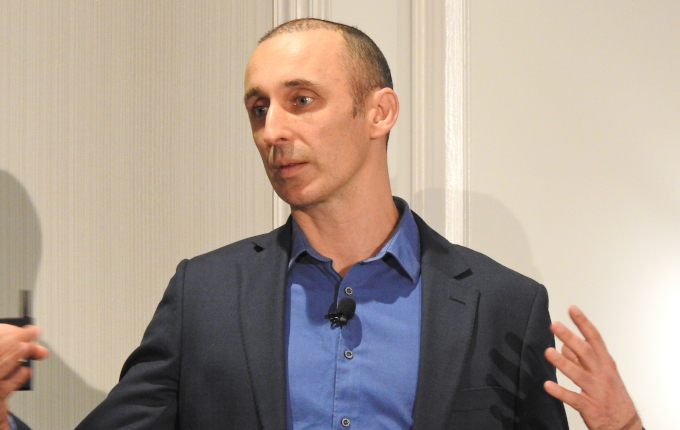If ILS insure against catastrophic weather events, then are investors in this space taking a bet against climate change? We speak with Gareth Abley about MLC’s 18 year experience investing into the asset class
As climate change continues largely unchecked, the world has seen an increase in severe weather events, including hurricanes, floods, droughts and wildfires. In fact, earlier this month, a report by 160 scientists found that the Earth has reached its first climate tipping point with the widespread death of coral reefs.
This could be the first in a series of potentially irreversible tipping points that will have catastrophic consequences for the stability of the Earth’s climate, causing a further increase in severely destructive weather events.
For example, between 2023 and 2024, there were 55 individual weather and climate disasters with at least US$1 billion in damages in the United States alone.
Yet, institutional investors have been attracted to insurance-linked securities (ILS) investing in recent years due to the good returns and diversifying nature of these investments.
But investing in catastrophe bonds (cat bonds) could be characterised as taking the other side of the climate change trade. After all, you are counting on natural disasters not to happen. Why would any investor in their right mind bet against climate change?
“As with any investment, it boils down to the question: ‘Are you getting paid for the risk?’,” Gareth Abley, co-Head of Alternatives at MLC Asset Management, says in an interview with [i3] Insights.
“Yes, you are providing reinsurance against natural catastrophe events and some natural catastrophe events become probabilistically more likely as climate change accentuates. Wildfires in California are probably the most acute examples that we’ve seen in the last decade, including in January 2025, which was pretty anomalous for that time of year.
“The other one is wind. Hurricane formation is also accentuated by warmer sea surface temperatures and the more hurricanes form, the higher the probability they will make landfall. Climate change is definitely increasing the risks of events,” he says.
But climate change is a slow-moving, long-term phenomenon, while reinsurance contracts and cat bonds have a relatively short maturity.
“Cat bonds are the publicly issued way to get exposure to the asset class. They tend to have three-year maturities. Within the private reinsurance market, which is much bigger, it’s annual contracts,” Abley says.
“And, as you would guess, the annual contracts get repriced annually. So you can take a view [of risk] every year. Am I getting paid well enough for the incremental increased risk of climate change, and is the margin of safety big enough?
“The view, at least for our portfolio, is that we definitely are getting paid enough for the risk at the moment,” he says.
ILS Sector Sees Rapid Growth
The ILS sector has grown rapidly over the past 25 years. In 2024 alone, 93 ILS deals were issued in the US, the main source of ILS activity, compared to just 12 in 2000. A total of US$177 billion of ILS has been successfully issued in the past quarter of a century.
The growth of the sector is partly driven by reinsurers looking for new sources of capital in an effort to diversify their risk. For example, reinsurers are heavily exposed to US property catastrophe risk, but some regions are more likely to experience natural disasters than others.
Florida and California are particularly prone to natural catastrophes such as hurricanes, wildfires and earthquakes, and so reinsurers seek to offload some of these risk concentrations. To do so, they offer attractive pricing to institutional investors to come in and provide capital.
“There are lots of people who live in Florida and California in expensive real estate. The problem with California is that you have earthquake risk and the problem with Florida is that you have hurricane risk,” Abley says.
“So the reinsurance industry is massively overexposed to US property cat risk and, therefore, that’s the risk that they’re most inclined to pass on to capital market investors like MLC. And that is the risk that you get paid the best for.

The reinsurance industry is massively overexposed to US property cat risk and, therefore, that's the risk that they're most inclined to pass on to capital market investors like MLC. And that is the risk that you get paid the best for – Gareth Abley, MLC
“But what is a concentration risk for the reinsurers is a completely uncorrelated, diversifying risk for institutional investors like us.
“Reinsurers want to diversify away from US property cat risk, whereas institutional investors are massively exposed to equity risk, GDP growth risk, inflation risk, interest rate risk and all of the generic risks that are infused in portfolios, whether in listed equities, private equity, property, infrastructure and so on,” he says.
The effort to diversify away from concentration risk means reinsurers offer much more favourable pricing for cat bonds related to Florida or California real estate than other areas.
For example, Abley has shown that bonds with similar expected loss profiles can offer vastly different spreads.
The US$250 million Palm Re cat bond issued by P&C insurer Florida Peninsula Insurance Company in April 2025 provides cover against losses from Floridian wind events. The bond has an initial base expected loss of 1.8 per cent and the cat bond has been priced to pay investors a spread of 7.75 per cent.
The US$150 million Sakura Re cat bond covers Japanese typhoon and flood risk and the initial base expected loss was estimated to be slightly lower at 1.6 per cent, but the spread that has been offered to investors was only 2.75 per cent, a fraction of the spread offered to investors in the Palm Re cat bond.
It is price anomalies like these that attract MLC to the ILS sector.
“We’ve been investing in the [ILS] market for 18 years and we’ve made money every single year of those 18 years. We’ve averaged cash plus 5.5 per cent net of everything since inception,” Abley says.
Other Risks – The Accuracy of Risk Modelling
But the increase in weather events is not the only risk to investing in ILS. Critics of the sector argue there is also significant model risk, as weather events are notoriously unpredictable and even the best estimates cannot fully capture the volatility and rate of change of weather patterns.
One investor [i3] Insights spoke to for this article questions if it is not altogether easier to avoid any model risk and simply invest in the stock of British reinsurer Lloyd’s of London to get exposure to the sector.
But this, of course, would provide little diversification from equity markets, while investors also take on additional risk by placing themselves at the bottom of the capital structure. Besides, investors such as MLC and their managers carefully seek out securities that offer the best risk profiles with attractive spreads, rather than take a broad exposure to the ILS market, as the comparison of the two cat bonds above shows.
Models have also improved over the years as more data has become available. The main providers of risk modelling in the lLS sector are Verisk and Risk Management Solutions, which was acquired by Moody’s in 2021.
These companies provide highly sophisticated analytical services, powered by an army of actuaries, seismologists, weather forecasters and specialised catastrophe risk experts. They use historical data that in some cases, such as with earthquakes, goes back thousands of years.
The granularity of their data allows these companies to estimate the probability of a $10 billion natural catastrophe hitting Florida, compared to the probability of a $30 billion catastrophe hitting New York.
They model more than 10,000 simulations, which will then be used by reinsurance businesses or ILS managers to inform their own independent modelling. These managers will apply their own adjustments and nudge the risk up or down, arriving at a probabilistic estimate of loss for a cat bond or a reinsurance contract.
As a result, the average expected loss rate estimated by the ILS industry has been largely in line with the historical realised loss rate of about two per cent.
Reinsurers Seeking New Capital
Yet, weather can be volatile and between 2017 and 2022 the world experienced a series of catastrophic weather events that numbered well above the historical average. For example, in 2022 alone, the US experienced 18 separate weather and climate disasters costing at least US$1 billion each.
In 2017, it experienced 19 disasters that cost at least US1$ billion, with Hurricane Harvey resulting in US$ 160 billion in damage alone, according to data from the US National Oceanic and Atmospheric Administration.
What made matters worse was that this was also a time when central banks rapidly increased interest rates, resulting in insurance companies experiencing widespread losses on their invested assets, which are largely held in fixed income securities.
“The broader peer group lost money between 2017 and 2022, but because we were more [invested in] remote risk and maybe more fee efficient, we made money each of those years,” he says.

We made mid-teen returns in 2023 and 2024, and although the prospective returns are not quite as good as 2023, they are still pretty good – Gareth Abley, MLC
“But a lot of people didn’t, including reinsurance companies. On the liability side, they had to pay out, and then on the asset side, which they have set aside to pay those liabilities, they lost money because bond yields went up.”
But what was a series of difficult years for reinsurance companies led to an opportunity for institutional investors. As reinsurers sought to draw external capital into the sector to cover their liabilities, they offered attractive yields to those willing to invest.
“There was a need to draw capital into the space. On the back of that, pricing became very attractive,” he says.
For example, in 2017 the average spread rate offered by reinsurers shot up to more than eight per cent, while in 2015 it was only five per cent.
More recently, returns have been extremely strong for investors, although they have been coming down a bit in the past two years.
“We made mid-teen returns in 2023 and 2024, and although the prospective returns are not quite as good as 2023, they are still pretty good,” Abley says.
How Much ILS is Enough?
As a source of uncorrelated returns, ILS are one of those holy grails institutional investors eagerly seek out. Yet, deciding on the size of the allocation to this asset class is not just a matter of portfolio optimisation.
Regulatory and peer pressures discourage investors to take on too much tracking error and even with a successful 18-year track record, MLC is hesitant to put more than two per cent of the portfolio in ILS.
“[ILS] have delivered a positive return for 18 years, and based on current pricing, [the market] expects a 14 per cent no-loss return with a three per cent expected loss. So let’s call it an 11 per cent net return.
“For something that’s completely uncorrelated and doesn’t rely on skill or spooky magic, to me that is worthy of a decent chunk [of the portfolio],” Abley says.
“In practice, most super funds would struggle to get above two to three per cent, because of the peer risk and because of the Your Future, Your Super risk. So MLC is in that two per cent area.
“But we have spoken to other sophisticated institutions who are more at the five per cent or even higher,” he says.
ILS In Benchmark Unconstrained Investing
The University of Sydney Endowment Fund does not face the pressure of the Your Future, Your Super performance test and has a culture of benchmark-unconstrained investing. The fund’s allocation to ILS is well over two per cent, although it doesn’t disclose the exact number.
“I think it’s one of, if not the best, examples of a diversifying strategy,” Tim Peters, Senior Investor at the fund, tells [i3] Insights.
Peters believes ILS are a fundamentally diversifying strategy to equities, compared to other asset classes and active managers.
“A lot of people look for uncorrelated assets by quantitative proof. So, you’ve got a fund, you’re doing x, y, z, and you tell me it’s uncorrelated. And your proof is that your numbers regressed against the S&P 500 show a 0.2 beta,” he says.
“That’s nice, but I’d argue the more important aspect is the qualitative why? What is driving the lack of correlation? Is it a trading style, something unique, a random average, or correlated risk hiding in the tails? That is exceptionally difficult to assess,” he says.
Unlike other assets, ILS are not tied to economic drivers but to the underlying risk of disaster, no matter how they are priced, or who prices them.
“What I like about ILS is you can run those same numbers and show the whole bunch of uncorrelated [numbers] to the S&P, but at the end of the day, the risk is a large hurricane hitting Miami, or an earthquake hitting LA,” Peters says.
“That doesn’t sound to me like the Fed hiking rates, S&P returns, inflation, or GDP numbers. It is fundamentally unlinked from the market engine.
“Add that many asset owners are not bound by the regulatory restrictions applied to (re)insurance capital and it allows you to bring a different type of funding to the table.
“That’s an edge.”
_________
[i3] Insights is the official educational bulletin of the Investment Innovation Institute [i3]. It covers major trends and innovations in institutional investing, providing independent and thought-provoking content about pension funds, insurance companies and sovereign wealth funds across the globe.


